Every February, without fail, I find myself back at the stove, stirring up what I consider the ultimate Brazilian treat. The 14th may demand chocolate, not that I'm particularly attached to Valentine’s itself (especially since we celebrate it on a different day in Brazil), so if there’s ever a sweet that feels like a sweet hug, it’s brigadeiro.
Soft, rich, chocolatey, and so simple. It doesn’t ask for fancy techniques—just a handful of ingredients, mostly shelf-stable, and a little patience as you stir your way to glossy, fudgy perfection. Honestly, who could resist?
In Brazil, we celebrate Dia dos Namorados (Lovers' Day) on June 12th. It falls right before Saint Anthony’s Day (June 13th)—he’s our patron saint of marriage, the one people turn to when hoping to find "the one." Dia dos Namorados is a big celebration, full of gifts, big gestures, love, and even a few superstitions. It’s also the perfect time for single people to lean into traditions like simpatias—little rituals to help summon love. Because in Brazil, if there’s a chance to conjure up love, we’ll take it.
Brigadeiro has been a staple of Brazilian culture since the 1940s. It was named after Brigadeiro (Brigadier) Eduardo Gomes, a military figure who ran for president. His supporters—mostly women—made and sold these sweetened condensed milk-based chocolate treats to raise funds, and just like that, the confection took on his name. After all, people would ask, “Posso experimentar o famoso doce do brigadeiro?” (“Can I have the brigadier’s candy?”).
Sweetened condensed milk, or "leite condensado," has become a deeply ingrained cultural staple in Brazil, despite its complicated origins. Introduced by Nestlé over sixty years ago, it quickly became a household name. The name "Milkmaid" was difficult to pronounce, so people began referring to it as "leite da moça" (milk of the lady), based on the image on the can. Over time, it found its way into countless family recipes, passed down through generations, many of which have been using the ingredient since the 40s and 50s. While its rise can be traced back to Nestlé's influence, and its history has a dark undertone tied to colonialism and commercialization, it is now undeniably part of our food culture.
And since a good romance in Latino culture is never complete without a little drama, I always make sure to bring up (on Valentine's, no less!) the infamous Trader Joe’s brigadeiro controversy (or, as I prefer to call it, the fiasco). Instead of recognizing its Brazilian roots, Trader Joe’s mistakenly attributed our treasured sweet to Portugal. THE NERVE!

I do shop quite frequently at TJ’s, and this one hurt me! (We’ve made up, don’t worry.) But this wasn’t just a simple labeling error—it was a significant stumble in recognizing the cultural identity that brigadeiro represents for us emotional Brazilians. It left a bitter taste when the praise for our creation (humble, yet a source of such great pride) was instead given to—come on, TJ’s—the colonizers.
Trader Joe's took a turn to address the whole thing by adding a charming story to their website. They acknowledged that while their brigadeiros are made in Portugal, the brigadeiro itself is undeniably Brazilian.
The story was last year when I checked in February, but I don’t think they’re selling brigadeiros anymore, so the link isn’t accessible now.
Good enough for now, but I won’t lie, the nature of these food identity inconveniences still nags at me. And how often they happen! My opinion is that the representation of our food culture beyond Brazil is already quite limited, so ensuring accuracy becomes crucial. When profiting from it, the least one can do is get it right.
That being said, moments like these remind me why I do what I do. They push me to keep telling our food stories—to make sure the flavors of my world are not just tasted but truly understood. To turn frustration into opportunity, into something meaningful. And, of course, delicious. For this Brazilian, there’s no bigger dream than seeing our food culture take its rightful place on the global stage.
That’s why I’m always so happy to encourage people to order brigadeiros—the real ones—from my friend Mariana’s shop in NY: Brigadeiro Bakery. An immigrant who has built a little brigadeiro empire, and I couldn’t be prouder! She ships nationwide, and trust me, she makes the real deal.
Mariana is a proud Brazilian who works tirelessly to ensure our culture is rightfully represented. And honestly, whatever comes from her shop will always be my favorite! Biting into one is like tasting a little piece of my childhood.
Last year, I attended a gallery event in NYC, hosting many Brazilian officials, promoted by the Brazilian Board of Tourism - Visit Brazil, with the theme of the Amazon. Who could have ever imagined that I’d have the incredible privilege of signing the menu for the first day—genuinely, one of the biggest honors of my life.

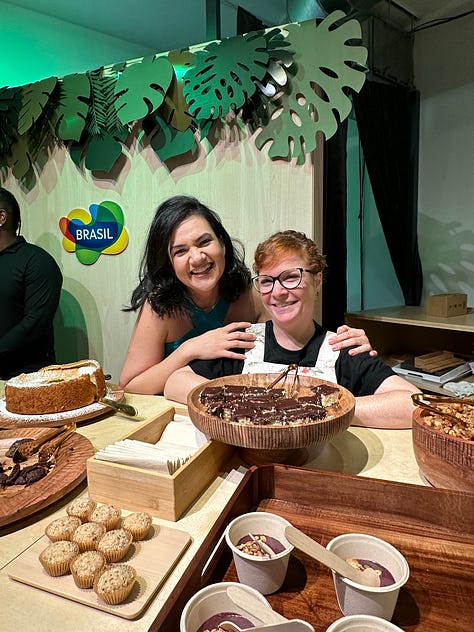
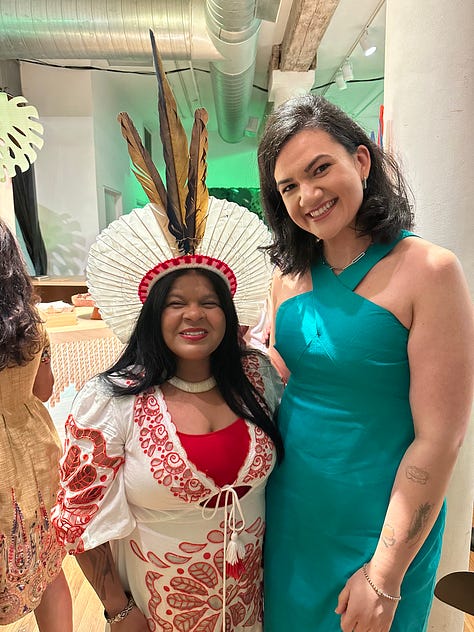
For the occasion, I asked Mariana to create a special brigadeiro recipe, and she delivered something unforgettable: she used cupuaçu, a fruit from the Amazon, which added a tangy, bright, tropical fruitiness tone to the brigadeiros, and rolled them in crushed, crunchy castanha-do-pará (Brazil nuts).
Cupuaçu is closely related to cacao. It has a creamy, pulpy texture and a wonderfully complex flavor—like a mix of white chocolate, pineapple, banana, and passion fruit, with a slight tanginess. It’s rich and fragrant, often used in desserts and juices, and even chocolate—that is called cupulate.
Brigadeiros are also near and dear to my heart because they helped me win a (French-inspired, but let’s be real, I cooked a whole lot of Brazilian, haha!) cooking competition by making the largest brigadeiro trifle this country has ever seen. I’ll never forget when the judges tried my humble childhood sweet and deemed it worthy of belonging on Julia’s table.
I can’t count how many times, when I felt down or unmotivated in my career, I’ve gone back to that day, revisiting the wonderful critiques about my trifle from that episode of The Julia Child Challenge. They always give me the boost I need to keep believing my food (and the knowledge around it) is worth sharing.
I’ve seen brigadeiros in the media countless times since I started paying attention, and they truly deserve the spotlight—these little bites of magic! Don’t get me wrong, I love seeing them celebrated. But you know what I cherish the most? Watching someone try a brigadeiro for the very first time, without any pretension. That moment, that look of pure delight, always feels like I'm receiving the best of Valentine’s gifts!
Hope you have a sweet day,
Brigadeiros
Makes aproximately 30
These are as traditional as brigadeiros can get, and I believe that's where you should start. But let me share a cherished tradition from my childhood: Brigadeiro de Colher. It's eaten straight from a shared plate with spoons, while still warm, creamy, and caramel-like. Often, these moments were spent with my cousins during sleepovers, and those warm plates of brigadeiro hold some of my sweetest memories from Brazil. If you want to try it this way, pour it onto a plate while still warm, skip the rolling, and dive in—but be careful not to burn the roof of your mouth!
1 can (14 ounces) sweetened condensed milk
1 tablespoon salted butter
1/2 cup dark chocolate (72% cacao), chips, or chopped
3 tablespoons cocoa powder
Lots of fun sprinkles!
In a medium, heavy bottomed saucepan, over low heat (induction 3), pour the sweetened condensed milk, add the butter, dark chocolate, and cocoa powder. Stir with a spatula until everything is warm and fully incorporated.
Continue stirring for about 8 to 10 minutes, then increase the heat to medium (induction 5).
If you notice the brigadeiro becoming too bubbly and lumpy, turn off the heat. Stir vigorously for about two minutes, then resume cooking over low heat. My advice here is: it is of utmost importance to pay attention to heat management throughout the process.
Observe how the consistency changes from liquidy to a denser, caramel-like texture, to fudgy. After 10 to 12 minutes, test the readiness by running a spatula through it. It should leave a path, indicating that it's cooked.
Once cooked, switch from the spatula to a whisk and whisk vigorously for about 5 minutes or until the mixture cools down a bit and becomes smooth. Minor lumps are acceptable as they will disappear eventually.
Pour the smooth mixture onto a shallow plate, wrap it in cling film, and let it cool in the refrigerator for at least 2 hours.
Sprinkle the sprinkles into a medium bowl and take the brigadeiro plate out of the fridge. Consider lightly buttering your hands to prevent sticking as you roll them.
Using a tablespoon (or teaspoon if you’d prefer them on the smaller side), scoop out portions, roll the brigadeiros between your hands, and transfer them to the bowl of sprinkles, allowing them to dance there as they get dressed.
Display them on a beautiful cake platter and serve.
If you don’t have sprinkles, you can roll them in coconut flakes, crushed nuts such as pistachios, peanuts, or cashews, or even cocoa powder.
They keep well in the fridge for up to 5 days and at room temperature for up to 2 days.


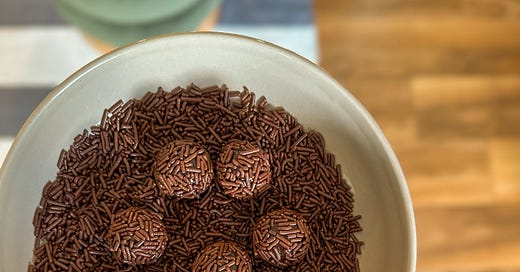



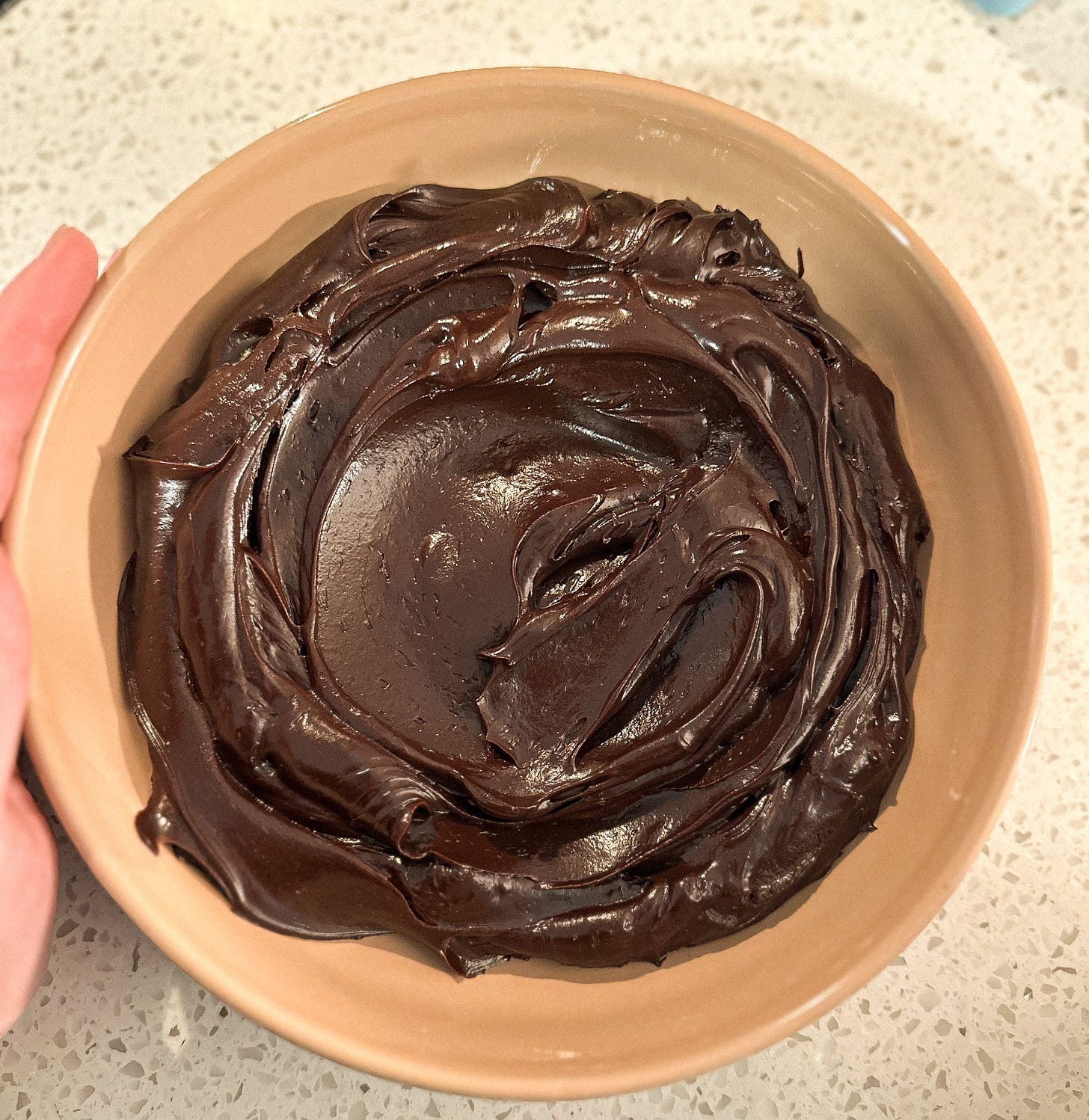

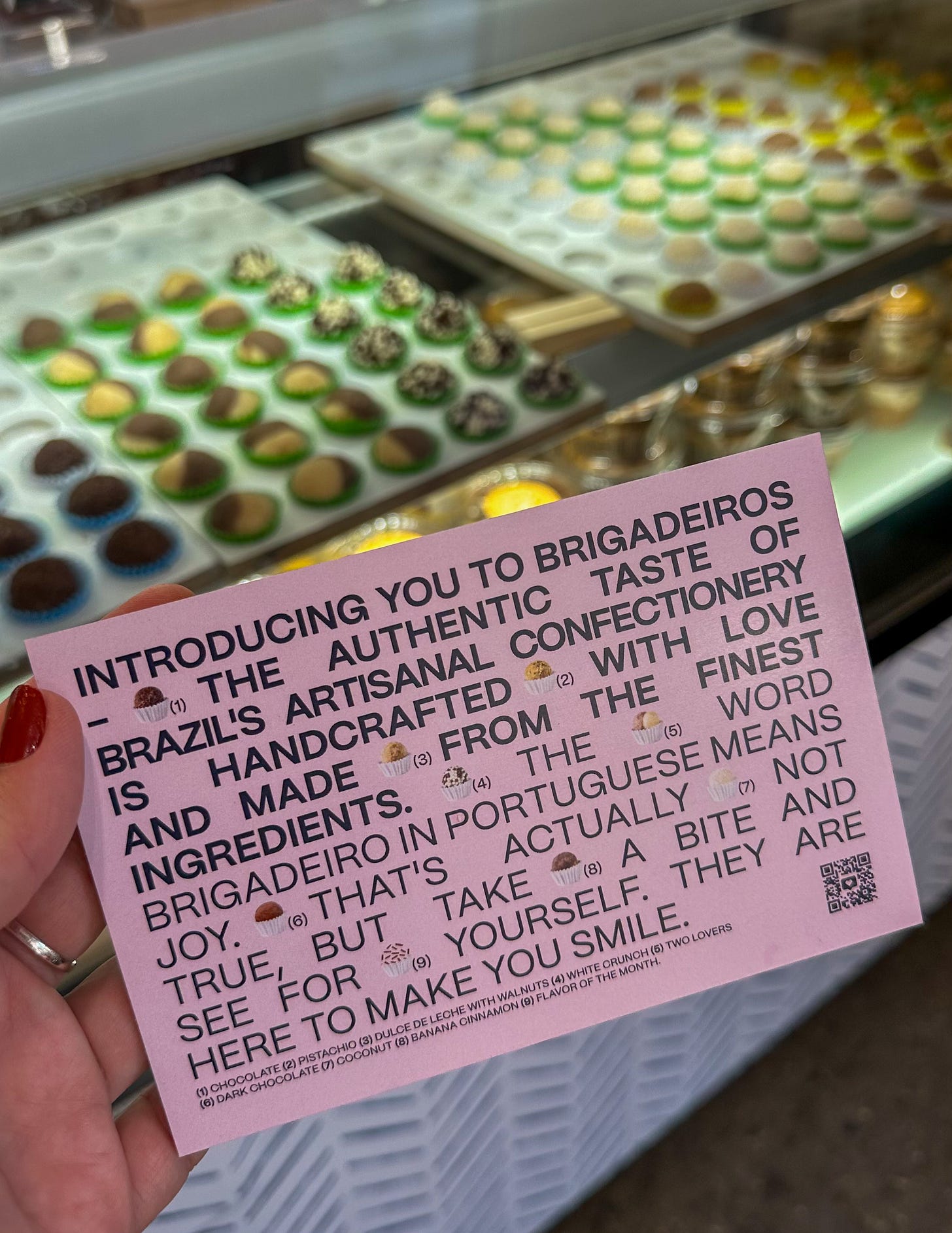
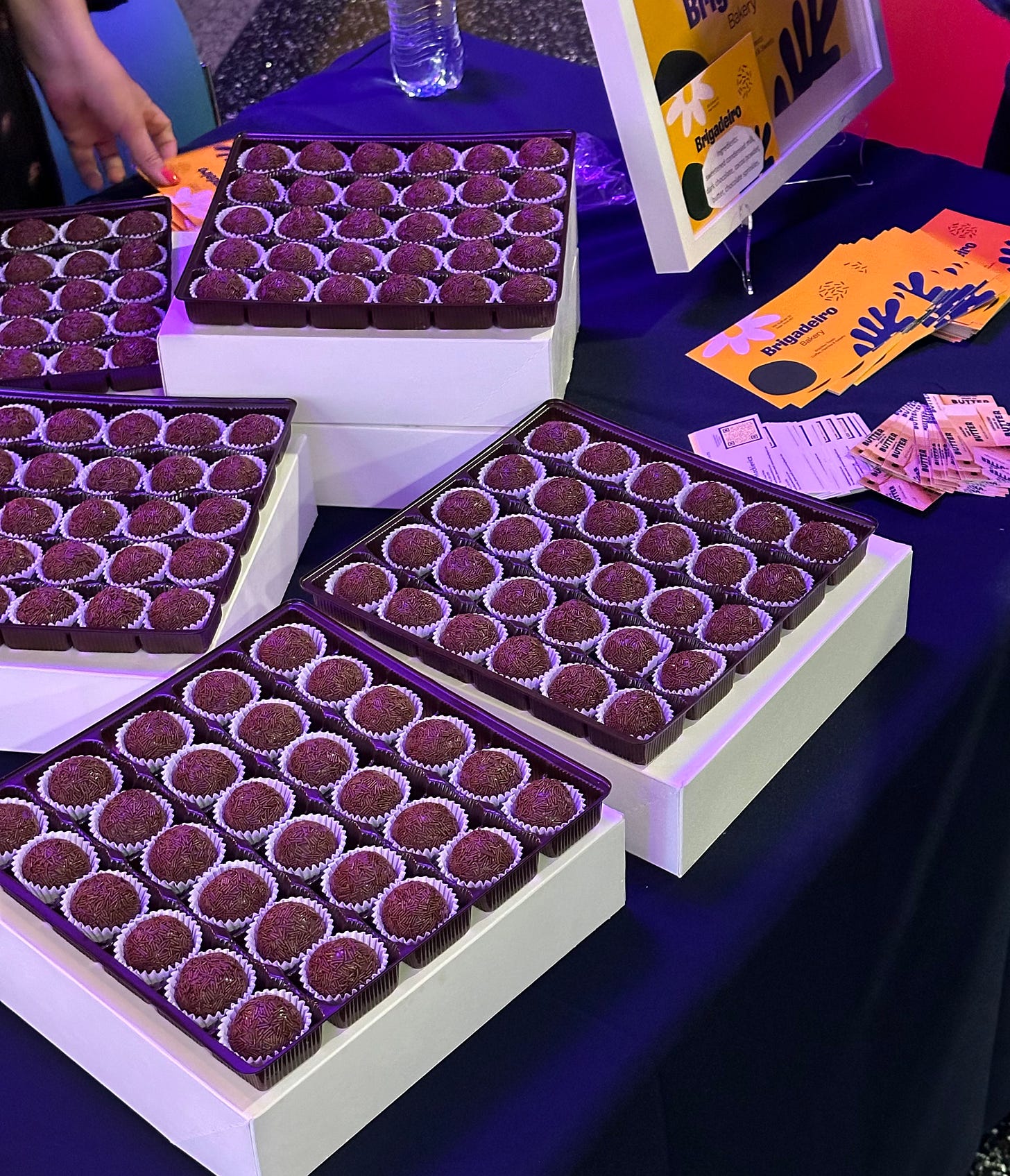

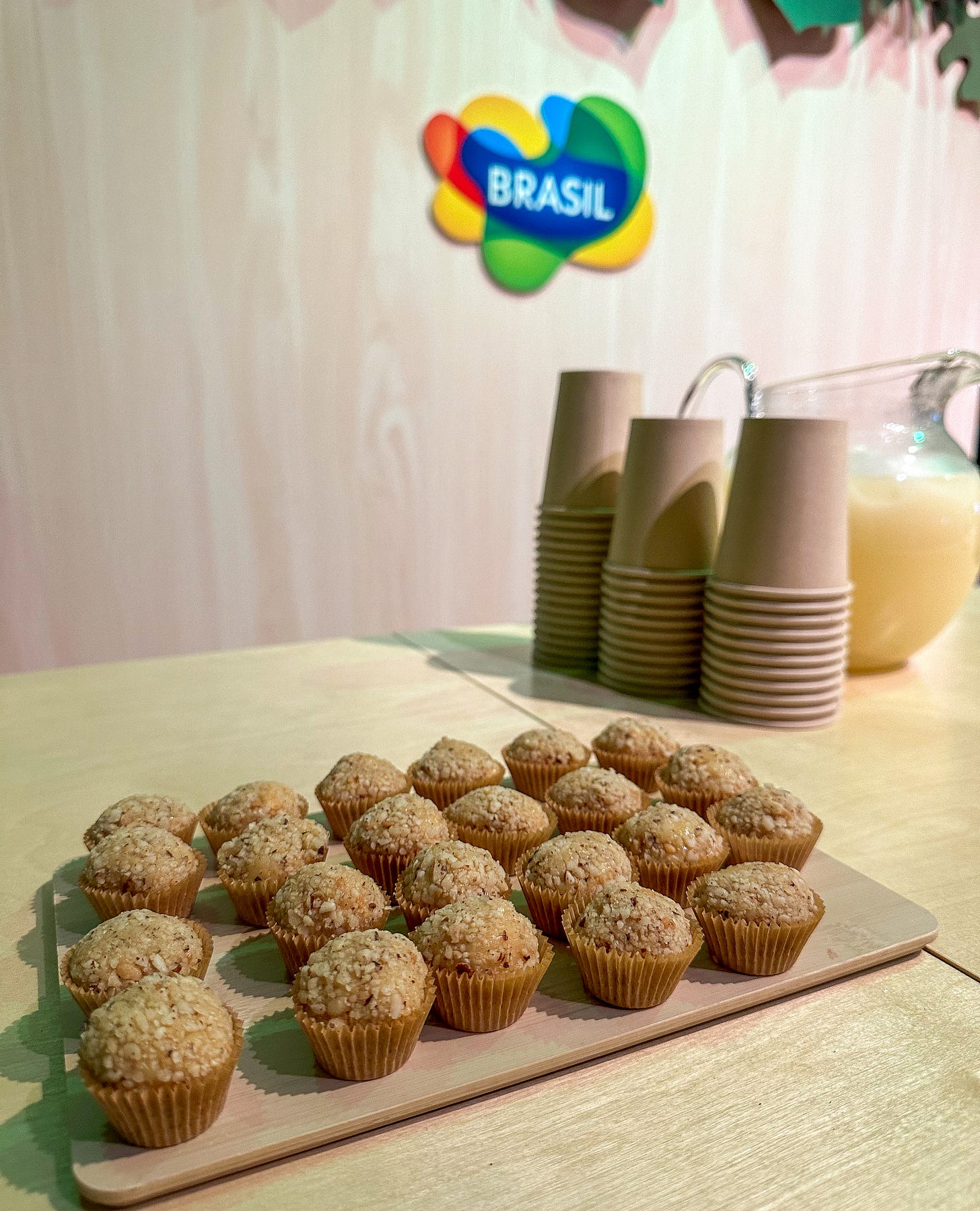


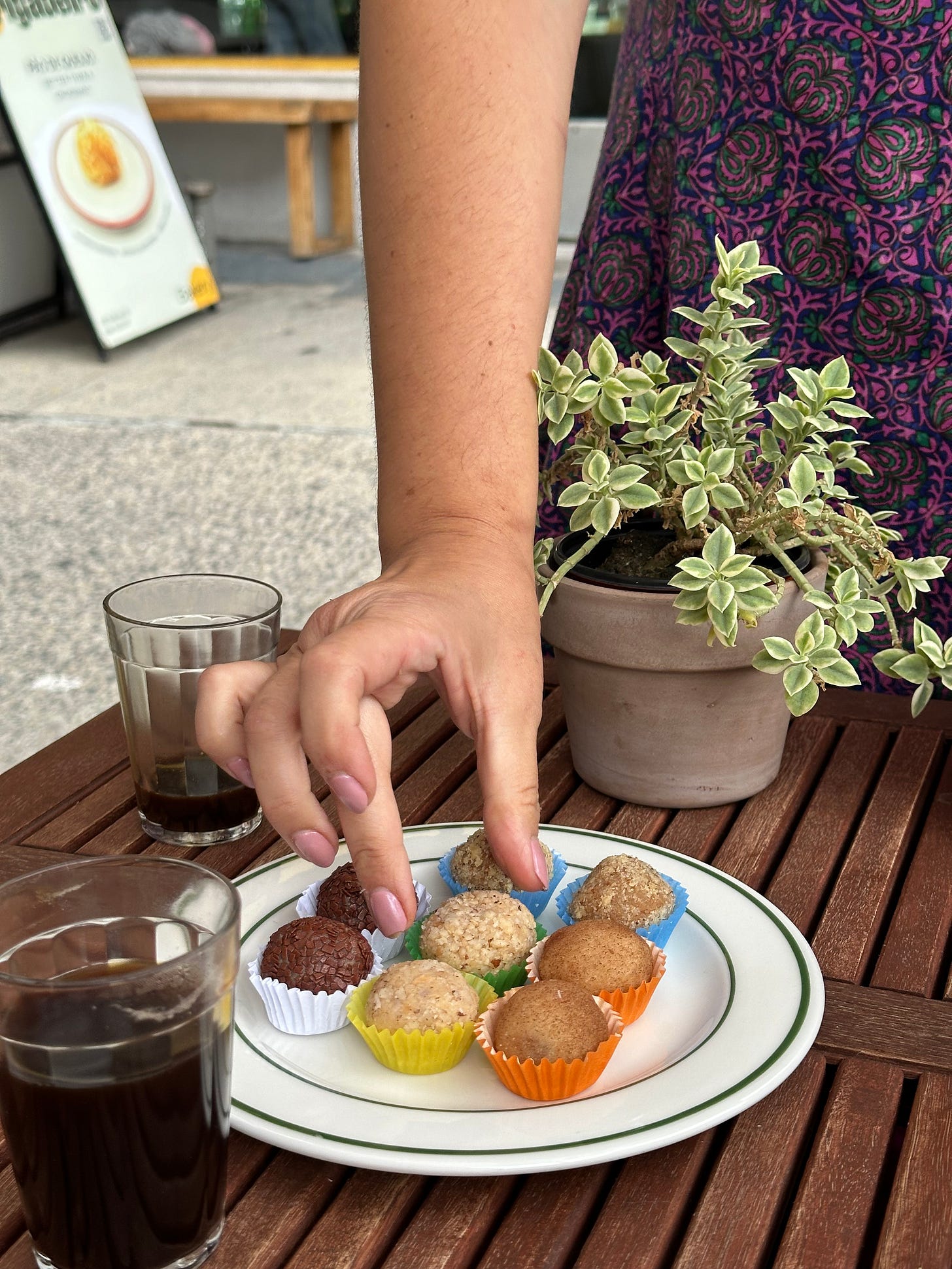

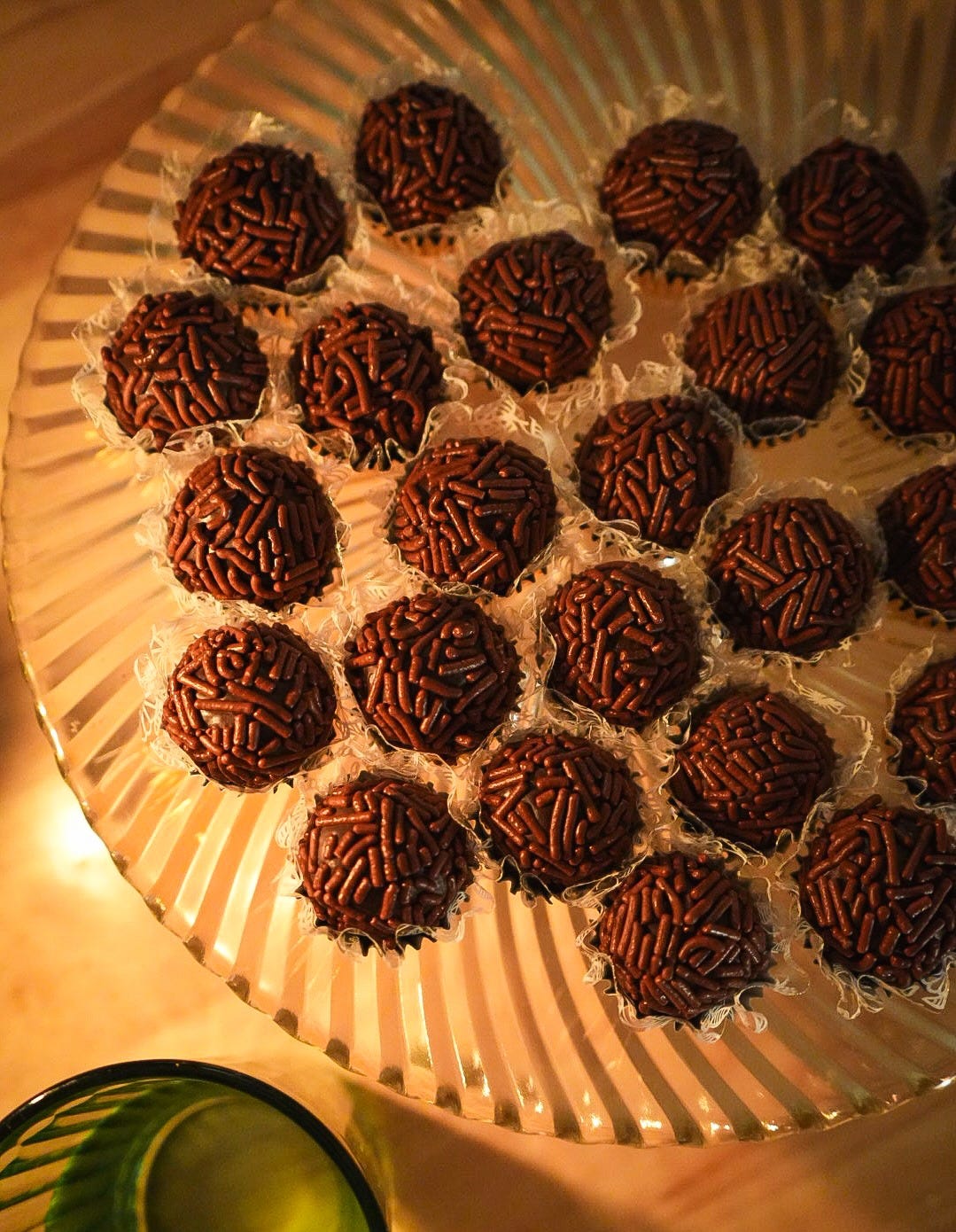



I will try to make these! I cringe at saying that I have never made a successful batch of brigadeiros… 🫣i never get to the rolling part… I end up eating by the spoon like a kid 😂
Ooo! I’ve been waiting for this recipe so long. Merci Jaíne! 👏🏻👏🏻👏🏻👏🏻